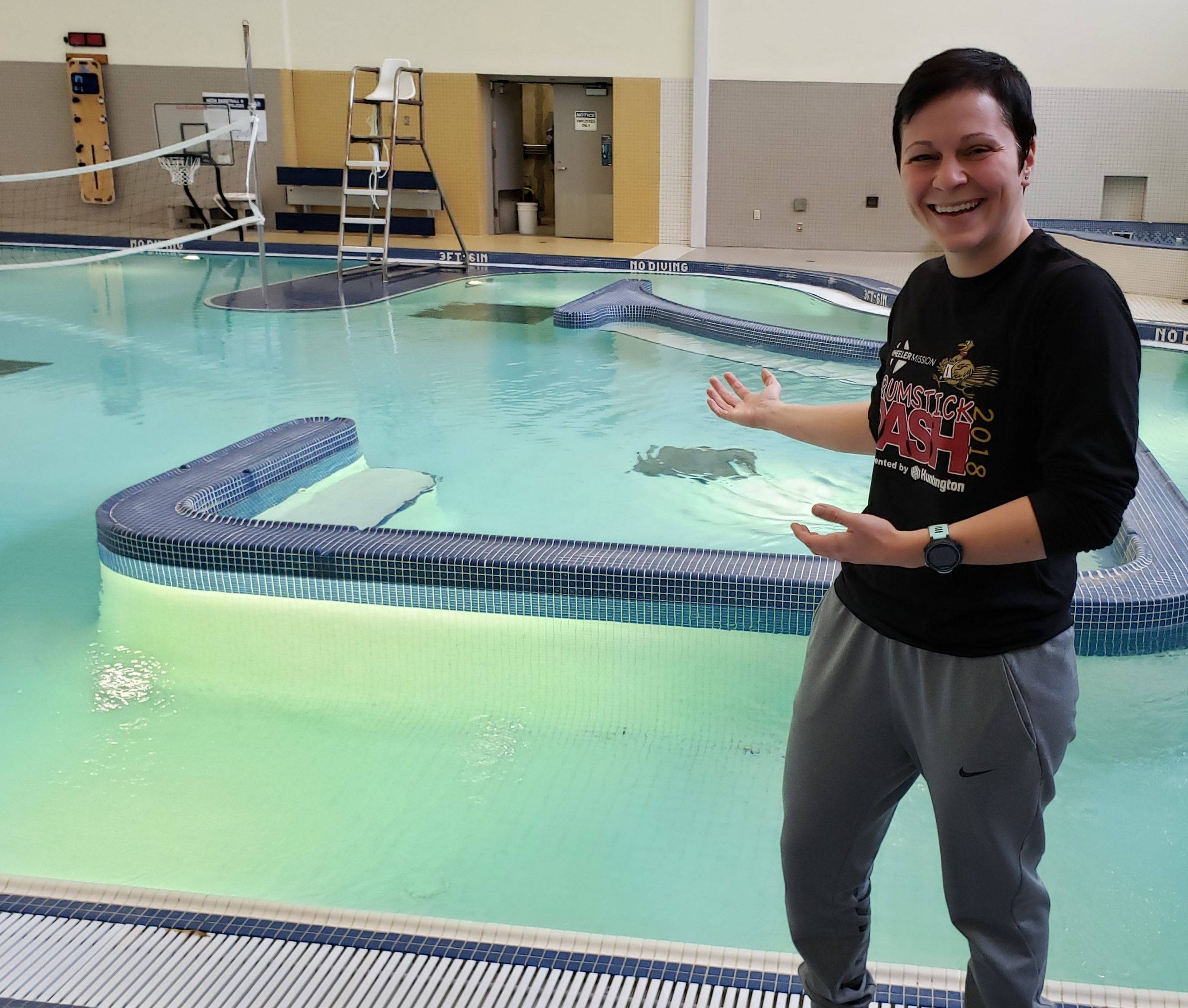
Our own, Leah Weprich, Assistant Director of Recreation & Wellness, Aquatics & Operations, Butler University welcomes all faculty and staff to come water-walking, now free at the Health and Recreation Complex (HRC). Water jets provide a gentle current and resistance that builds strength. All full-time faculty and staff have free access.
Resistance without weight
Pool exercise builds your strength in much the same way as do weight machines at a fitness club or flexible rubber tubing you might use at home. “You need to look at the pool as a giant resistance machine,” says Carol A. Kennedy-Armbruster, MS, a water exercise specialist and instructor in the kinesiology department of the School of Health, Physical Education, and Recreation at Indiana University in Bloomington, Indiana.
“These exercises are awesome for anyone to do,” Kennedy-Armbruster says.
Water also soothes and massages with light pressure (called hydrostatic pressure) while it helps strengthen. That safe, therapeutic environment makes pool exercise good for athletes and others recuperating from sports injuries or illness and for those who need to eliminate joint stress. The calm movement of pool water soothes and relaxes the spirit as well.
Getting started
If you have health concerns, check with the water exercise instructor (if you’re taking a class) and your health care provider to make sure the activity is appropriate for you. Start your pool workout in water depth that matches your swimming ability. Never rely on a buoyancy device to keep you safe in water that’s too deep for your skills.
That said, you don’t need much equipment to work out in water—just a bathing suit and, perhaps, water shoes (pool walking can cause sore feet from rough bottom surfaces). She also recommends not adding strength-building gear such as webbed gloves and water weights until you’ve spent four to six weeks doing pool exercises and getting used to the resistance of the water.
Water Walking 101
If you are accustomed to walking on land for exercise, get ready to slow things down in the water. In pool walking you have to decrease your walking speed by one-third to one-half of what it is on land.
“That is because of the viscosity of the water,” she says. “You have to slow down your movement in order to keep the correct form.” As your strength increases, you can progressively increase your pace. “It will make land walking a lot easier,” she adds.
Waist-high water is best for water walking.
Starting:
- Walk 1 or more laps, according to your comfort level. (To stay in waist-high water, you might have to walk from side to side in the pool, instead of from one end to the other).
- If an average lap takes you 35 seconds to walk, see if you can cut a few seconds off that speed for a lap or 2.
- Then return to your original speed.
- When comfortable, try walking one lap facing forward and the next lap backward. This builds both your abdominal and back muscles.
HRC AQUATIC CENTER
Monday–Friday:
6:00 AM–8:30 AM
11:00 AM–1:00 PM
3:00–9:00 PM
Saturday–Sunday:
Noon–6:00 PM
www.healthywomen.org/content/article/lose-weight-water-workouts
